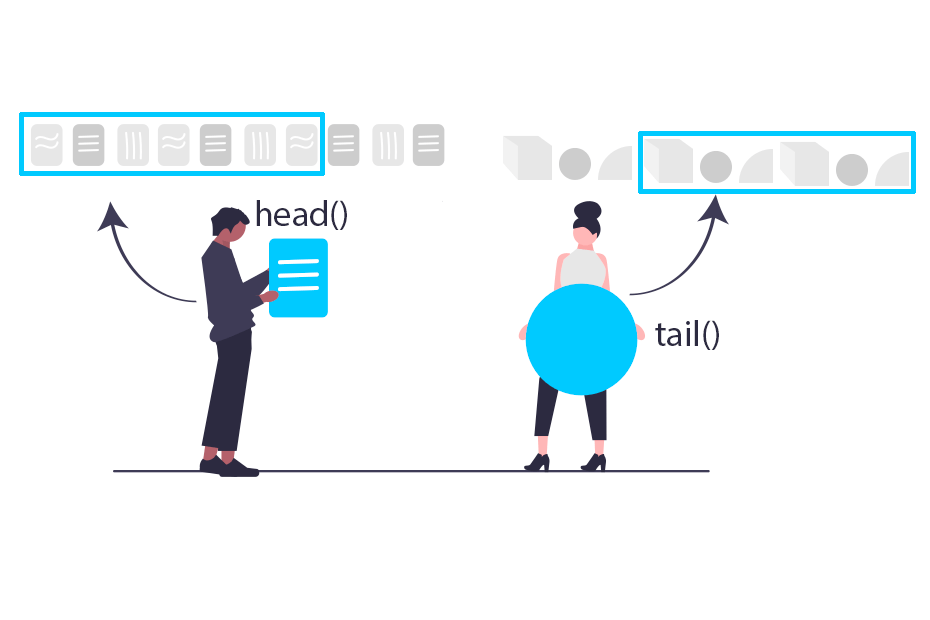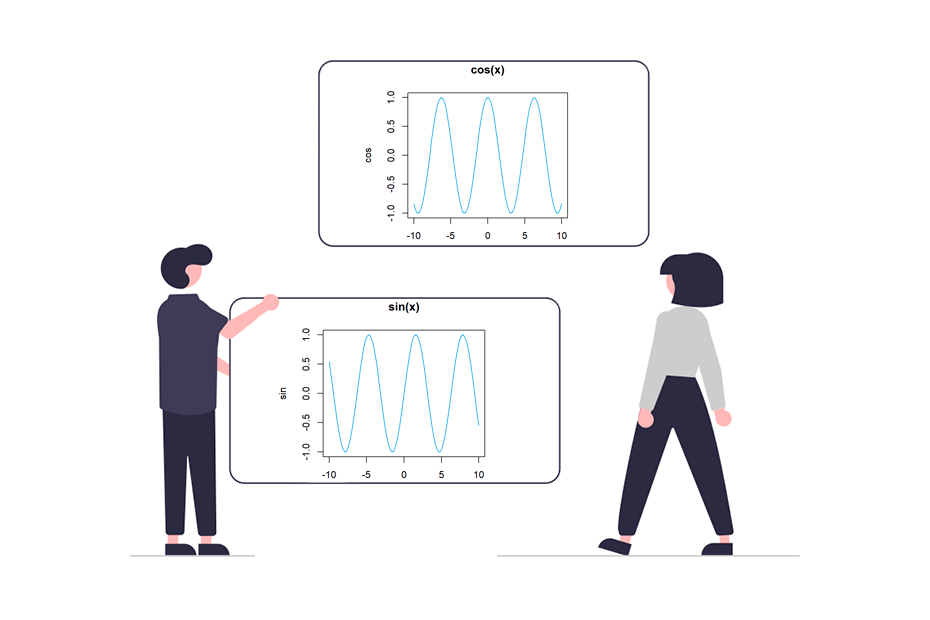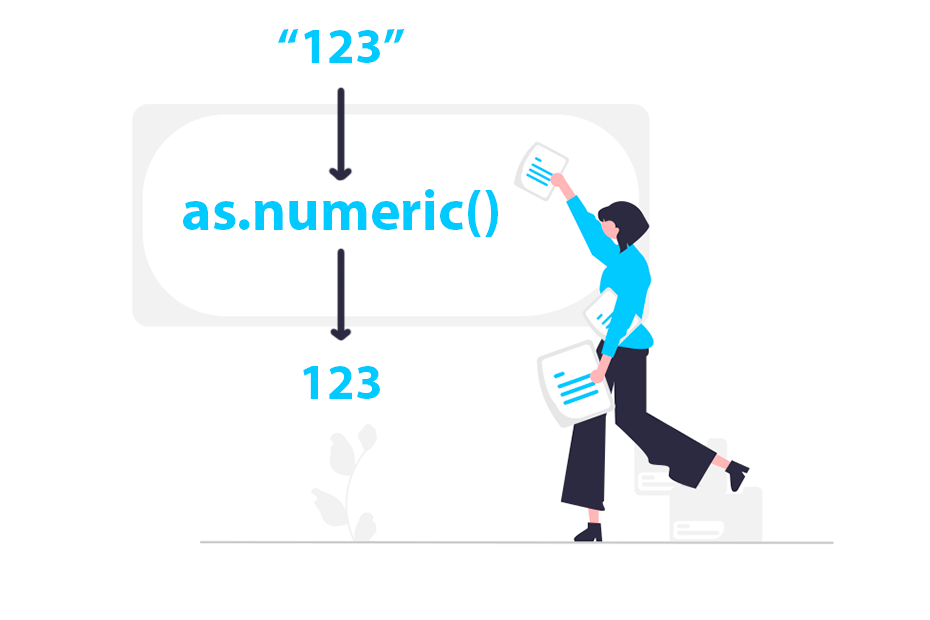head and tail functions in R

The head and tail functions allow to obtain the first or last parts of vectors, matrices, tables, data frames or functions. By default, only the first or last six elements are returned, but you can also specify the desired number of elements.
The head function
The basic usage of the head command in R is to retrieve the first elements of a vector or list or the first rows of a data frame or matrix. By default, the function will return the first six elements or rows, as shown in the examples below:
If you have a vector x the head function will return its six first elements.
x <- c(10, 12, 20, 25, 31, 17, 7, 3 ,19)
head(x)10 12 20 25 31 17If your data is a data frame named df the head function will list its first six rows.
df <- data.frame(x = 1:10, y = LETTERS[1:10])
head(df) x y
1 1 A
2 2 B
3 3 C
4 4 D
5 5 E
6 6 FYou can also specify the number of parts to be returned from the head function making use of the n argument. In the following example we are returning only the first two elements of the list named l.
l <- list(a = 1, b = 2, c = 3)
head(l, n = 2)$a
[1] 1
$b
[1] 2However, the argument n can also take negative numbers to specify how many elements to remove starting from the bottom. Going back to our fist example, if you want all the elements except the last two you can do:
x <- c(10, 12, 20, 25, 31, 17, 7, 3, 19)
head(x, -2)10 12 20 25 31 17 7Filtering first rows and columns
If the dimensions of the object passed to the function are not NULL you can also specify the number of first columns to return passing a vector with as many numbers as dimensions to n. For instance, if you want to view the first ten rows and first two columns of a data frame you can type:
df2 <- data.frame(x = 1:26, y = letters, z = LETTERS)
head(df2, n = c(10, 2)) x y
1 1 a
2 2 b
3 3 c
4 4 d
5 5 e
6 6 f
7 7 g
8 8 h
9 9 i
10 10 j
The tail function
The tail command is very similar but the opposite of the head function, as it will return the last elements of a vector or list or the last rows of a data frame or matrix.
If you apply the tail function to a vector you will retrieve its last six elements:
x <- c(10, 12, 20, 25, 31, 17, 7, 3 ,19)
tail(x)25 31 17 7 3 19If you use the function with a data frame or matrix you will get the last six rows by default:
df <- data.frame(x = 1:10, y = LETTERS[1:10])
tail(df) x y
5 5 E
6 6 F
7 7 G
8 8 H
9 9 I
10 10 JYou can also specify the desired number of last elements to return with n. In the example below we are getting the last two rows of the data frame.
df <- data.frame(x = 1:10, y = LETTERS[1:10])
tail(df, n = 2) x y
9 9 I
10 10 JRecall that you can also specify negative numbers, which will remove the first n rows or elements.
df <- data.frame(x = 1:10, y = LETTERS[1:10])
tail(df, n = -1) x y
2 2 B
3 3 C
4 4 D
5 5 E
6 6 F
7 7 G
8 8 H
9 9 I
10 10 J




